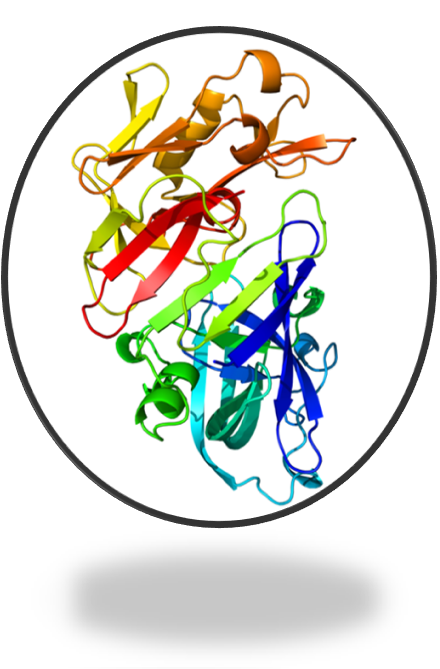Biome • Enzymes • Neurotransmitters • Immune Systems • Endocrine System
What is Glyphosate Toxicity?
2.6 billion pounds of glyphosate have been sprayed in the US alone in the past two decades.
Glyphosate, is one of the most toxic chemicals to life and humans on the planet. It is found in Roundup and sprayed the world over. It is found in all GMO crops, in people's yards, school’s grounds, the sides of the roads, and on all food imported into the United States at the dock yards, including organic foods. It has made its way into air pollution, drinking water, and vaccines.
It is up to us to know what goes in our bodies and to determine how it effects us. On the one side there is nutrition, on the other there is poison.
As glyphosate is against all life it is up to humans to decide the fate of life.
“The dust of our cells IS the dust of the soil (soul): ‘Man, remember that you are dust and will return to dust.’” Our cells are made up of mineral elements which are to be found at any given moment in the soil of Normandy, Yorkshire, or Australia; and if these “dusts” have been wrongly assembled in plant, animal or human cells, the result will be the imperfect functioning of the later. “
- Andre Voisin: Soil, Grass, and Cancer
It’s Time to Take Action. Get Involved Here!
Glyphosate is toxic to all life forms and:
Sprayed, in the form of Roundup, on all GMO crops that are glyphosate resistant and Non-GMO crops where glyphosate is used as a desiccant to force early ripening of the crops and their derivatives.
It is found in grains, legumes (peas, peanuts, soybeans, lentils), corn, sugar, sugar beets, canola, alfalfa, potatoes, pumpkins, citrus and apples, cotton and sorghum, to name a few.
Also found in processed foods like soy lecithin, high-fructose corn syrup, corn starch, etc.
All non-organically raised meat, dairy, eggs, and poultry as these are fed the above-mentioned foods.
It is built into the collagen and stored in the fascia, cells, and organs in non-organic grain-fed animals.
It is also in the GMO soybean-based-feed fed to farm-raised-fish.
It is in beer, wine, honey, pet-food, vaccines, and cotton.
It is in the air and water in all agricultural lands.
Symptoms of acute glyphosate poisoning:
Some or all symptoms may be present: vomiting, diarrhea, abdominal pain, gastrointestinal infections, itchy or burning skin, skin rashes and infections (particularly prevalent in children), blisters, burning or weeping eyes, blurred vision, conjunctivitis, headaches, fever, rapid heartbeat, palpitations, raised blood pressure, dizziness, chest pains, numbness, insomnia, depression, debilitation, difficulty in breathing, respiratory infections, dry cough, sore throat, and unpleasant taste or burning in the mouth.
Other effects reported include balance disorder (dizziness), reduced cognitive capacity, seizures, impaired vision, smell, hearing and taste, drop in blood pressure, twitches and tics, muscle paralysis, peripheral neuropathy, loss of gross and fine motor skills, excessive perspiration, and severe fatigue.[i]
Chronic poisoning clinical presentation of glyphosate toxicity
Consult your practitioner for help.
References:
[i] Glyphosate. National toxic encephalopathy foundation. http://www.national-toxic-encephalopathy-foundation.org/roundup.pdf.
Biome • Enzymes • Neurotransmitters • Immune Systems • Endocrine System
Glyphosate & The Biome
Glyphosate’s primary target is the Shikimic-acid pathway. This pathway is a seven-step metabolic process to make the glycine dependent enzyme 5-enolpyruvylshikimate-3-phosphate (EPSP) synthase. This enzyme is used by beneficial and harmful bacteria, fungi, algae, some protozoan parasites, and in plants for the biosynthesis of folate (B9) and the essential aromatic amino acids (tryptophan, phenylalanine, and tyrosine).
Compounding effects leads to:
Gut dysbiosis, yeast overgrowth, pathogenic bacterial over- populating, bloating, and digestive issues.
Malabsorption and mineral deficiencies.
Intestinal motility issues from disruption.
Low pH, lactic acidosis, and neuro-inflammation.
Food intolerance, gluten intolerance, tight junction issues, leaky gut, celiac disease, or IBS.
Insufficient bile acid and bile salt creation.
Biome • Enzymes • Neurotransmitters • Immune Systems • Endocrine System
Glyphosate, Enzymes, Proteins, and Digestive Pathways
Glyphosate (the amino acid glycine plus a phosphate molecule) supplants glycine in all living organisms. DNA coding calling for glycine uptakes glyphosate instead. Glyphosate gets built into the system and becomes the operator of proteins and enzymes disrupting receptor cite functionality, enzyme functionality, protein creation, and the collagen of the body.
This leads to:
Trypsin deficiency (the enzyme that digests wheat) = gluten intolerance, celiac disease, and thyroid dysfunction.
Collagen issues = deformities, inflammation, and contracture.
Liver enzyme deficiency, sulphur and nitrogen metabolism issues, uric acid conditions, gout, and eczema.
Biliary and allergic type or tension headaches.
B12/folate deficiency = Methionine (e-coli) deficiency effecting Homocysteine - Glutathione and detoxification pathways, MTHFR gene mutations (Hep B virus), neurotoxicity, and ammonia build up.
Glutathione deficiency = Compounds mercury and aluminum toxicity through enzyme disruption, increases in metabolic bi-products such as methyl mercury.
CYP hemoprotein (iron) dependent enzyme deficiency affects hemoglobin production, bile acid and bile salt creation, hormone creation, and thyroid enzyme functionality.
G-protein coupled receptor sites dependent on glycine become defective = disruption of all neurotransmitter and hormonal regulation in the body.
Biome • Enzymes • Neurotransmitters • Immune Systems • Endocrine System
Glyphosate, Neurotransmitters, Vagus Nerve, Acetylcholine, and Cerebral Inflammation
Glycine deficiency, dysbiosis of the gut, tryptophan deficiency, mineral deficiencies, and enzymatic dysfunction effects all neurotransmitter creation, regulation and the functionality of their organs.
This leads to:
Receptor site malfunction and enzyme disruption.
Lack of tryptophan effects a Serotonin deficiency = pain and pleasure, memory, learning and moods. Leads to Schizophrenia.
Decreased pH leads to lactic acidosis and neuro-inflammation.
Phenylalanine deficiency = Dopamine deficiency = Parkinson’s disease
Glycine regulates glutamate channels and glutamate metabolism. Excess glutamate = hyperactivity.
Enzyme deficiency to break down glutamate = neurotoxicity and adrenal burn-out.
Deficient acetylcholinesterase leads to prolonged acetylcholine activity affecting the sympathetic/parasympathetic nervous system, Vagus nerve, lungs, heart, digestive system, fight/flight response.
The vagus nerve governs infant reflexes, nurturing, and orgasm.
Biome • Enzymes • Neurotransmitters • Immune Systems • Endocrine System
Glyphosate, Adenosine, the Immune system, RNA Viruses, and Vaccine Injury
DNA codes for RNA transcription and RNA reads the DNA and codes for protein synthesis through base pair combinations. Glycine is the scaffold upon which the purine bases or adenine and guanine are formed. Glyphosate has a stronger polarization and chemostatic potential than glycine. Purinergic signaling activates or suppresses the immune system.
Glyphosate toxicity leads to:
DNA and RNA dysregulation, mitochondrial dysfunction, ATP production, and cell death.
Continued activation of adenosine receptor sites, leading to asthma, bronchospasm, and insomnia.
Adenosine suppression of the immune system leads to
Co-infections of EBV, Lyme disease, and others.
Enzyme dysfunction, histamine over production, and mast cell activation syndrome.
Activation of RNA viruses including coronavirus, vaccine injury, and auto-immune conditions.
Biome • Enzymes • Neurotransmitters • Immune Systems • Endocrine System
Glyphosate, the Endocrine System, and the Effects on the Hypothalamus-Pituitary-Adrenal or -Thyroid Axes
Glyphosate dysregulates the endocrine system by dysregulating hormone production and receptor site functionality. Most especially it dysregulates thyroid function, adrenal function, regulation and creation of sex hormones (androgens), blood pressure, and perinatal and childhood brain development by interfering with both the hypothalamic-pituitary-thyroid and hypothalamic-pituitary-adrenal axes.
1. Lacto-fermenting bacteria deficiency leads to phenylalanine or tyrosine deficiency = hormone deficiencies
2. Receptor site issues and hormone creation
Leading to infertility, fetal development issues, miscarriage, or parturition issues
Leading to hypo- or hyperthyroidism, elevated blood pressure, diabetes and more.














